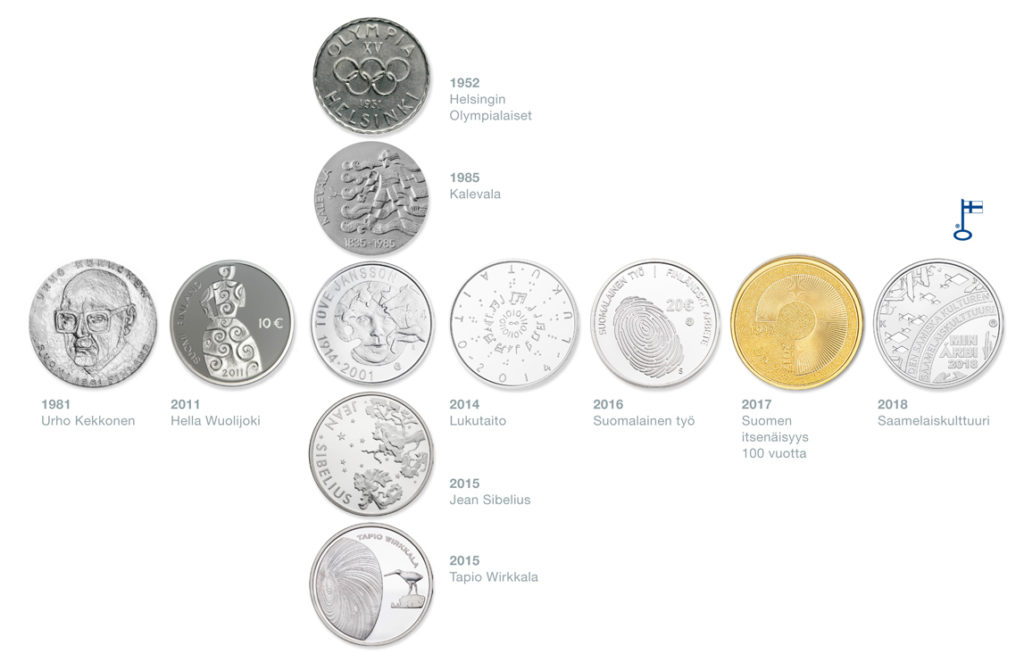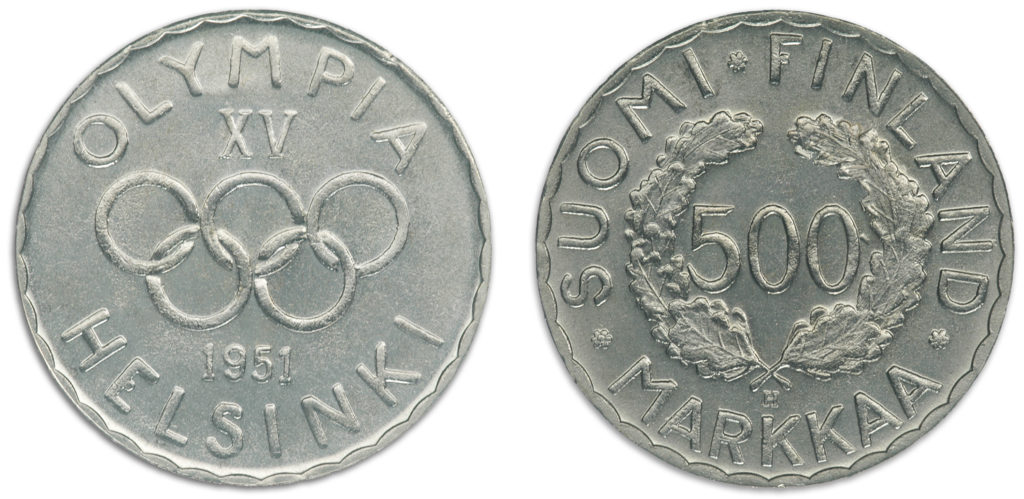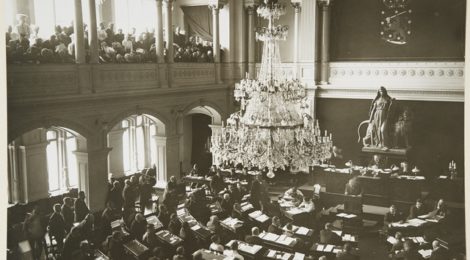Commemorative coins confirmed by Decree of Finland’s Ministry of Finance are minted in honour of socially significant people and events. They tell the stories of their age and convey the values of our society to future generations.
Chief Curator, collections, Timo Huusko of the Ateneum Art Museum has chaired the Commemorative Coin Committee since the beginning of 2019. Huusko has worked at Ateneum and the Finnish National Gallery, now converted from a state art museum to a foundation-based collection, since 1997. He is currently responsible for Ateneum’s collections.

Commemorative coins highlight issues of historical significance, and not just any events will do as their subjects: “To merit a commemorative coin, an event, person or phenomenon has to be significant on many levels. The event must have a wider social or cultural dimension with a broad value base.”
The Commemorative Coin Committee instituted by the Ministry of Finance selects the subjects and thus participates in the definition of what our society feels to be meaningful. ”The competitions look for artistic, current and topical submissions. Thus, they are products of their times and reflect the burning questions of the day. Even younger collectors can be attracted to the wider cultural significance of commemorative coins”, Huusko says.

The world’s first Olympic coin
Even though commemorative coins have a long history in the global sense, they are still fairly new in Finland: “The first Finnish commemorative coin was minted in 1951 to celebrate the 1952 Olympic Games. It was the world’s first Olympic coin, which makes it a truly unique piece.”
After the Olympic coin, commemorative coins were minted infrequently until the organisation of the Commemorative Coin Committee by the Ministry of Finance in 1993, which heralded a regular and continuous release programme for commemorative coins. According to Huusko, commemorative coins go far back in the history of Western art, being known from as far back as imperial Rome and the European Renaissance.

Commemorative coins are shaped by the hands of artists
A commemorative coin breathes civilisation and cultural dignity. Its quality design and successful implementation allow potential buyers to discover a shared value base. The designers of commemorative coins include sculptors and industrial designers. Some are the work of architects, graphic designers and painters. “Creative professionals take part in the commemorative coin creation process through competitions announced through artists’ unions”, Huusko says.
According to Huusko, the future of commemorative coins is bright also from the creative perspective, since young designers and artists are eager to design commemorative coins. “The future of commemorative coins appears as a continuum, not just the fancy of a certain generation of artists. This positive trend makes the work of the Committee worthwhile”, Huusko concludes.

